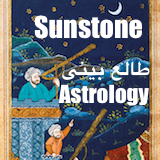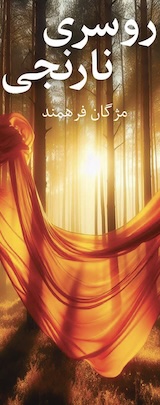VCENNA
Speaker: Shauheen Etminan
Presented at Ethnopharmacologic Search for Psychoactive Drugs Conference 55th Anniversary (ESPD55) hosted by Dennis McKenna and McKenna Academy of Natural Philosophy at St. Giles House, UK
About the Speaker:
Shauheen Etminan is the co-founder of VCENNA, a CNS drug discovery biotech company inspired by the ethnobotany and wisdom of ancestral medicinal practices for mental wellness treatment. Shauheen is an inventor and repeat founder with a portfolio across multi-industries. He holds a Ph.D. in chemical engineering from the University of Calgary.
https://www.vcenna.com/
Abstract:
State of Maga (mēnôg – middle Persian), mentioned in the Zarathustra’s Gâthâ (the most ancient parts of the Zoroastrian’s holy book Avesta), and the trance state of M’ana (مع نی ), referred to by renowned Persian mystics and poets Rumi and Hafez, is commonly described as a special illumination, a form of transcendental knowledge beyond language and perception. While the pursuit of the world of M’ana is deeply mystified in Persian literature of post-Islam-occupation Iran, in these mystic traditions a vision into the spirit world is not achieved due to a neurochemical intervention but comes by divine grace or as a reward of saintliness, or meditation in stillness. In contrast, ancient Zoroastrian priests, including Zarathustra, gained their omniscient wisdom and knowledge of mēnôg existence before death through drinking an inebriating botanical liquid extract called hôm (haoma).
There have been several speculations about the botanical identity of haoma, or its Vedic version soma, to be Amanita Muscaria, Ephedra, Black Henbane and vine, Psilocybe Stropharia Cubensis, Bang (Cannabis Indica), and Peganum Harmala (wild rue). Among these candidates, the only one that mysteriously has secured its place in the house of every Iranian, including today’s population with 98% non-Zoroastrian, is Peganum Harmala! Known as Espand (اسپند ) in Farsi, they burn the dry brown seeds of the wild rue for its purifying smoke and earthy scent to avert the devil’s eyes and keep negative energies away from their day to day lives, barely knowing that the seeds contain strong psychoactive compositions. Like the Amazonian shamanic vine, Ayahuasca’s main component yagé (banisteriopsis caapi), Peganum harmala is a rich source of psychoactive beta-carboline alkaloids, harmine, and harmaline. In their book Haoma and Harmaline, David Flattery and Martin Schwartz conclude that Peganum Harmala was the original intoxicant plant represented in the Iranian religious tradition as haoma.
This presentation will review the most explicit and detailed Iranian account of psychedelic intoxication for religious purposes, the journey of Arda Viraz (Ardā Wirāz Nāmag) to have a vision of fate of the souls after death. Astoundingly, in Arda Viraz’s story, the psychedelic journey preparation protocols (set, setting, and dose) seem to be accounted for him to safely transition to an outwardly sleep dreamlike state and targeted visions to see the condition of the righteous and unrighteous in the other world. Through investigating the quality of the state of his mind and journey versus the neuropharmacology of different plants on the body, we will try to re-examine the botanical nature of the Zoroastrians’ haoma.










Comments